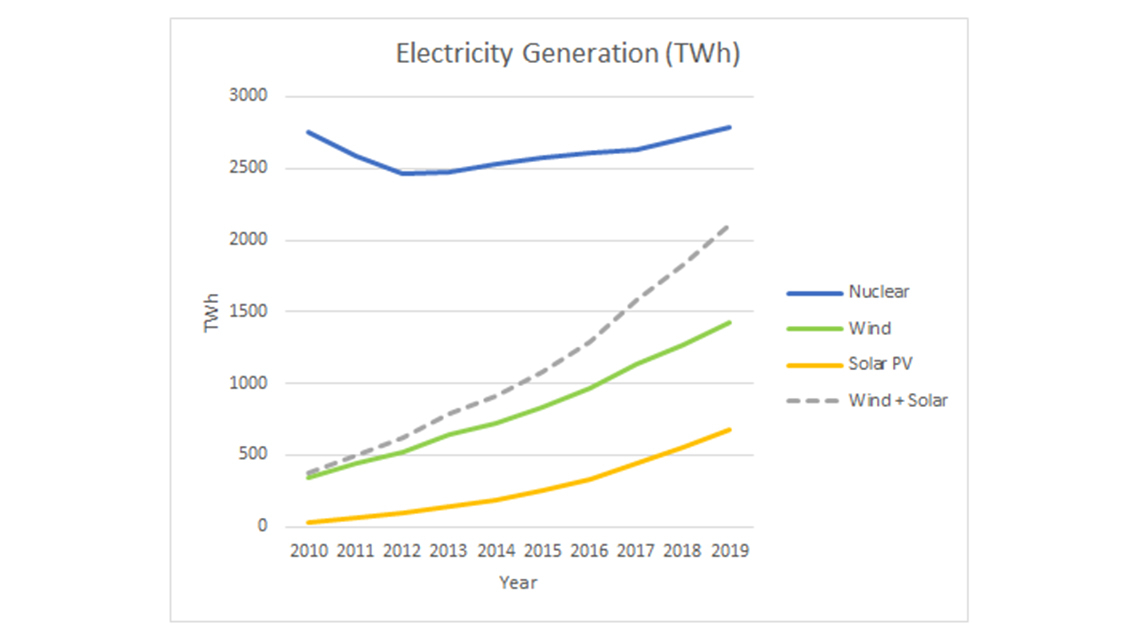At the beginning of the new millennium, amid growing awareness of the link between energy-related greenhouse gas emissions and climate change, the notion of a ‘nuclear renaissance’ became popular. Scientists and policy makers identified low carbon nuclear power as a potential protagonist in the transition to clean energy.
However, the accident at the Fukushima Daiichi Nuclear Power Plant, operated by the Tokyo Electric Power Company (TEPCO), on 11 March 2011 dealt a blow to plans for swiftly scaling up nuclear power to address not only climate change, but also energy poverty and economic development. As the global community turned its attention to strengthening nuclear safety, several countries opted to phase out nuclear power.
Following efforts to strengthen nuclear safety and with global warming becoming ever more apparent, nuclear power is regaining a place in global debates as a climate-friendly energy option. That is due to its vital attributes: zero emissions during operation, 24/7 availability, a small land footprint and the versatility to decarbonize ‘hard-to-abate’ sectors in industry and transportation. But even as technology-neutral organizations such as the Intergovernmental Panel on Climate Change (IPCC) and the International Energy Agency (IEA) recognize nuclear power’s ability to address major global challenges, the extent to which this clean, reliable and sustainable source of energy will achieve its full potential remains uncertain.
The Fukushima Daiichi accident and public acceptance in some countries continue to cast a shadow over nuclear power’s prospects. Furthermore, in some major markets, nuclear power lacks a favourable policy and financing framework that recognize its contributions to climate change mitigation and sustainable development. Without such a framework, nuclear power will struggle to deliver on its full potential, even as the world remains as dependent on fossil fuels as it was three decades ago.







